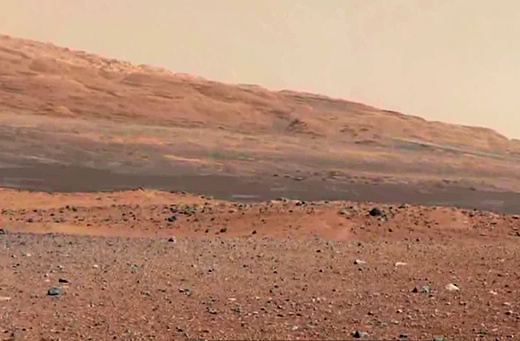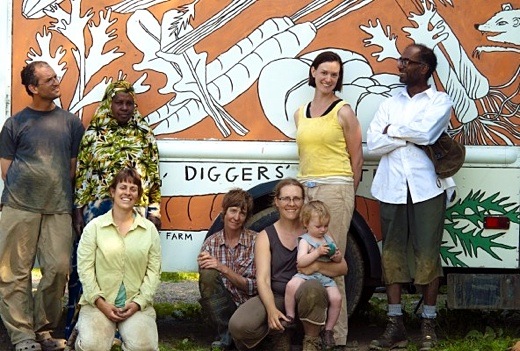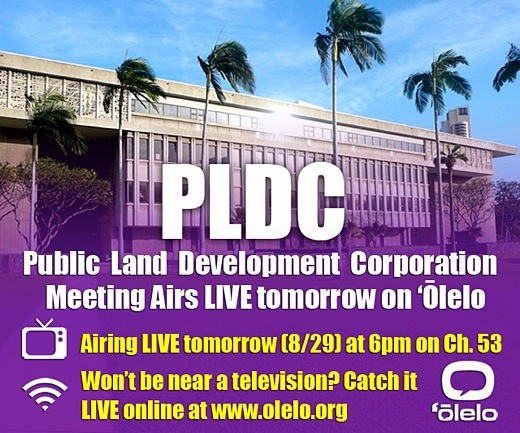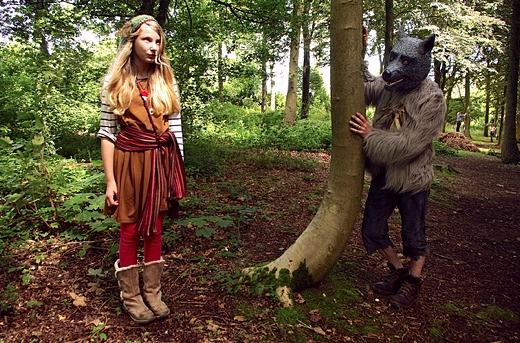SUBHEAD: Back in the day much of the world was covered with forests, and could withstand extremes more easily.
By Brian Kaller on 25 August 2012 for Restoring Mayberry -
(http://restoringmayberry.blogspot.co.uk/2012/08/days-of-future-past.html)
 Image above: The River Liffey near our home in rural Ireland was flooded in late 2009. From original article.
Image above: The River Liffey near our home in rural Ireland was flooded in late 2009. From original article.
“I can’t remember a year like this. Ever,” said an old man in the tweed jacket and flat cap. My wife and I had stopped in the pub to take shelter from the rain – not the cold mist that Irish people know so well, but a hard rain that loudly hammered the low ceiling above our heads.
“Are you from here?” I asked him, talking over the drum roll above.
“Lived in this place all my life,” he said, “Sixty-seven years. I talked to my neighbour down the road today – he’s 85 years old, and he said he’d never seen a year like this. He thought 1947 was a bad year, but it was nothing like this.”
Everyone here says the same: farmers, neighbours, bus drivers, the old lady I met in the coffee shop this morning. As useful as it is to read the record-breaking weather numbers, it also helps to talk to people who have spent much of their time outdoors for decades and ask them how the air feels.
When modern people try to gauge whether climate change is real, they run into several problems. We no longer live with a sense of our surroundings as our ancestors did, but spend much of our time in a bubble of regulated temperature and lighting. Even when we allow ourselves to feel the elements, we do so for a narrow sliver of time; until recently most people only lived to forty years or so, and while we have almost doubled that figure lately, our lives still flicker on and off quickly compared to those trees or turtles.
We have been able to stretch our understanding far beyond our own lives, though, thanks to a million or so un-thanked researchers each testing bits of the past: pockets of prehistoric air trapped in ice, pollen grains in lake mud, bones and branches and beetle wings, and bits of carbon left behind when an errant subatomic particle jumped its atomic ship. In short, experts of all kinds, of dozens of faiths and countries, have come up with a story of the past – and in broad strokes it all fits like a particularly horrific jigsaw.
The story they tell us is not that carbon dioxide traps the heat of the sun like greenhouse panes – that was known around the time of the US Civil War. Nor is it the fact that our industry and modern machines are flooding the air with carbon dioxide and will change the climate – that has been predicted for more than a century.
Such information even entered into pop culture long ago. I have on my shelf a book that once came free with Life magazine in 1955 called
The World We Live In – it was to promote science among young Americans in an age when both
Life and science education were commonplace and uncontroversial. It casually states (1) that pollution from cars and factories had boosted CO2 levels by 10 per cent --
those were the days! -- and that the world would get much hotter in the years ahead. At the time, saying that humans would someday walk on the moon would have been more contentious.
While it did not appear the most urgent issue at the time, references to carbon emissions remained in the mainstream; in 1965, for example, President Lyndon Johnson said in a presidential speech that “this generation has altered the composition of the atmosphere on a global scale through … a steady increase in carbon dioxide from the burning of fossil fuels.” (2) In the 1980s, when a growing body of data caused scientists to escalate their warnings, Time magazine devoted cover stories to the issue, and in 1990 George Bush – the first one – said that “we all know that human activities are changing the atmosphere in unexpected and in unprecedented ways,” although he balked at most changes to deal with the problem. (3)
Such pronouncements stood on a small but sufficient body of evidence – enough to convict, as it were.
The world’s experts had the ice-core and balloon-test equivalents of witnesses, motive and fingerprints, and world authorities listened, from the United Nations to Pope John Paul II. Over the next twenty years, though, three things happened.
First, the evidence multiplied to many times what it was before, both because we got better studies, clearer samples and so on, and because the phenomenon itself continued, offering more looming tragedy to study. Instead of just the witnesses, motive and confession, we now also had the equivalent of DNA evidence, forensics evidence, a signed confession and video footage of the crime. You had the accused changing their plea to “guilty.” You had the ghost of the murder victim rising from the dead to point a finger at the accused.
You had the accused killer holding press conferences announcing exactly how they committed the murder. In short, we went from 99 per cent certain to 100 per cent.
The second was that, as evidence of the crisis increased, support for fixing it decreased, until elites and media pundits – a minority in Europe, a majority in the USA – claimed the massive changes around them were a hoax, a secret conspiracy of scientists of many nations and faiths, their own eyes, and in some cases, themselves from a few years earlier. The argument usually ran like this:
- the weather was not changing,
- the cause of the change was unknown,
- we had nothing to do with the change,
- the change would turn out better for us, and
- the weather was not changing.
For the last two decades most environmental activists have continued fighting the good fight, although usually claiming – as with most issues -- that “we” have only x number of years to stop climate change “or it will be too late.” The number of years seemed to vary, for every new season and study seemed to force a re-evaluation, and the “too late” part rang hollow, for climate change has no starting point and nowhere to put a countdown.
A third thing changed, though – everything. As scientists began to understand global warming, the more they realised that it wouldn’t bring warmth. It would bring chaos.
A third thing changed, though – more people realised that global warming wouldn’t necessarily bring warmth, but chaos. Not a steady progression in a single, if sometimes inconvenient direction, nor a Hollywood apocalypse to which we could count down. It would mean sudden swings to extremes that we could not predict and for which we could never prepare. Even more disturbingly, this might be a return to the normal state of climate.
To understand this, it helps to understand that ice ages were not, as some people imagine, a planet covered in ice. The world probably did see something like that 700 million years ago, a Snowball Earth that might have forced the then-planet of germs to organise into bodies as fortresses against the elements. Since then, though, the planet has been what we would consider tropical, as in every dinosaur illustration you’ve ever seen.
Only a few million years ago did the world begin to see ice, and even then it has swung between two moderate states. Every ten thousand years or so the planet gets cooler and the ice caps expand down to Spain and Kentucky – the ice age part -- and then they retreat to the small caps we know today. The cooler stretches sound extreme to us because they covered today’s Western and prosperous nations where so many of us live, but remember that even now, most humans live elsewhere, and we didn’t just lose potential land.
Places like Chihuahua or the Sudan might have been more habitable than today, and the Caribbean and Indonesia would turn from island chains to vast rainforests; in terms of habitable space, we might gain as much in an Ice Age as we would lose.
It also helps to understand that humans did not merely endure weather, as we once thought, but changed it long before we discovered the fuel potential of fossils. US histories once imagined Native Americans wandering sparsely around a virgin wilderness in loincloths, while European histories rarely mentioned the hot and cold periods that had such power over European culture for hundreds of years.
A detailed history of Britain, for example, might have mentioned the “frost fairs” on the River Thames, without explaining why the Thames no longer freezes.
Over the last couple of decades, though, researchers began to fit various pieces together --as chronicled in books like William Ruddiman’s
Plows, Plagues and Petroleum and Charles Mann’s
1493 – and concluded that humans have been changing the climate since the end of the last ice age.
We imagine humans doing this in modern farming nations like Britain and China, but ancient humans farmed almost everywhere they settled; in what is now Arkansas and Nigeria, New Guinea and the Amazon. By cutting down most of the world’s trees, humans sent a constant trickle of carbon dioxide into the sky and prevented it from coming back, and that subtle shift, say some researchers put off the ice age that would otherwise have been coming back right about now.
When large numbers of farmers suddenly stop farming and the forests return, the effects can be seen in global weather. After Genghis Khan killed tens of millions of farmers, the climate noticeably cooled, as it did after the Black Death cut the European population by a third. When Europeans first reached the Americas, they brought ten thousand years’ worth of diseases to which Natives had no exposure, and an estimated 95 per cent of the population died, turning what had been a densely populated landscape into an empty land.
And once again, the forests grew back, and the resulting Little Ice Age iced over the Thames – and much of Europe – for the next 300 years.
The fact that we started changing the climate long ago, though, shouldn’t make us take the current crisis less seriously; rather, it should serve as a cautionary tale. If medieval farmers could do this much by burning trees, releasing the sunlight and carbon drawn down from the last century, how much more are we doing by unleashing hundreds of millions of years?
What we are doing, in fact, is flooding the air with the atmosphere of forests that existed before dinosaurs, from when a dimmer sun shone over a thicker atmosphere and giant insects under a fern-tree canopy. When we drive, fly, and use engines of any kind, mixing our own air with that of an alien planet.
This brings us to the final and greatest problem, one that we are only slowly beginning to realise. When the climate changed in the past – say, at the end of the ice age – it did so far more quickly than we realised, perhaps in a few generations. Climate change does not creep along slowly over generations, but swings from one state to another wildly, and the last several thousand years have been comparatively mild and moderate.
We have lived in a stretch of green and pleasant land not just as long as any individual can remember, but as long as there was recorded history.
It seems a long time to us, but it’s a blink in geological time, merely a summer in the ice-age oscillation. Humans have had modern brains for perhaps ten times longer than that, and have walked upright perhaps 400 times longer.
In this ten-millennia stretch of warm and stable temperatures, though, we have gone from our normal foraging to fields of crops, to cities, world wars and plastics, and multiplied our numbers perhaps 7,000 times above normal. Now that we have manipulated carbon dioxide levels as much as any ice age – just in the opposite direction – we might return to a wildly oscillating climate.
Climatologist J. P. Steffens, who studies ice cores from his base on the frozen wastes of Greenland, doesn’t believe this to be a coincidence. In Elizabeth Kolbert’s excellent 2002 article “Ice Memory,” Steffens says our frenzied growth in this one era could only happen because we have been fortunate enough to have a period of calm in the storm.
“Why didn't human beings make civilisation fifty thousand years ago?
You know that they had just as big brains as we have today. When you put it in a climatic framework, you can say, "Well, it was the ice age. And also this ice age was so climatically unstable that each time you had the beginning of a culture they had to move. Then comes the present interglacial — ten thousand years of very stable climate.
The perfect conditions for agriculture. If you look at it, it's amazing. Civilisations in Persia, in China, and in India start at the same time, maybe six thousand years ago. They all developed writing and they all developed religion and they all built cities, all at the same time, because the climate was stable. I think that if the climate would have been stable fifty thousand years ago it would have started then. But they had no chance.” (4)
Climatologist James Hansen echoed the same sentiment a few years later. “… civilization developed, and constructed extensive infrastructure, during a period of unusual climate stability, the Holocene, now almost 12 000 years in duration,” he said. “That period is about to end.” (5)
Of course, all these statements were made before the most potentially serious sign of the future -- bubbles of methane released from melting ice -- were seen frothing up from under the Arctic at an alarming rate. Most of the change so far has been from carbon dioxide; methane is dozens of times worse.
It’s a realisation with breath-taking implications for the whole idea of climate change.
Rather than a steady climb upwards, easy to predict, track and prove, we could face a chaotic series of extremes in all directions, depending on where we are.
Convincing people that the climate is changing presents an obvious difficulty; since climate is simply the average of thousands of days of weather, any of which is unpredictable in itself, change is difficult to see except by careful noticing over time. Even then such changes could be determined if the change was steady and predictable; if the temperatures, wherever you are, were to rise one degree per decade, then after a decade or two the world could have taken readings and had an answer before televisions were invented.
When the change means wilder swings, though, predicting the effects of climate change becomes even more difficult, as does convincing people. No one could ever blame climate change for any one weather event, any more than one could ever blame tobacco companies for any one smoker’s lung cancer.
You could, however, look broadly at the number of smokers who die of lung cancer, and compare them with the number of non-smokers, and you can calculate a certain per cent increase in the risk of cancer. In the same way, we can look at a typical climate and calculate what we are seeing that is unusual, as NASA scientists did earlier this year, and find that climate change caused the 2003 European heat wave that killed tens of thousands of people, or the 2010 Russian heat wave that caused massive peat fires, or the heat wave in Texas and Oklahoma last year. (6)
Or let’s say you just stick to this year. My daughter and I visited my native Missouri, which was enduring the same unprecedented heat and drought as most of the continent; July was the hottest month in US history. The weather is destroying farmers’ crops and driving up global food prices, which could lead to riots and civil war in countries where millions of poor people depend on the baseline price. Gardeners I know there are giving up; even if they have water, they say, the soil dries so quickly that it’s of no use.
We visited an acquaintance in the Ozark Mountains, and thankfully the forests there had not burned; Colorado and New Mexico were not so lucky.
Then we visited friends in Minnesota when floods hit Duluth – floods like no one had ever seen before, floods that ripped canyons through town big enough for cars to fall into, floods great enough to lift seals out of their enclosures at the zoo and set them on someone’s front lawn. A report last month found that the number of heavy rains had increased 30 per cent since 1948.
Then we returned to Ireland, seeing near-constant rain and chill.
A couple of years ago, Ireland saw its worst flooding in 800 years, with waters covering vast areas – but the very next summer saw a lack of rain, to the point that we worried that the peat bogs around us could catch fire. That winter we had a deep snowfall – something that almost never happens in Ireland. The next year we had another.
No doubt in a matter of months, various number-crunchers will diligently inform the world that these events were due to our human activities, unprecedented signs of a world to come, and be dismissed again.
At one of my talks in Minnesota, I talked about this, saying that the stock environmental message about climate change is wrong. We don’t have a certain number of years to avoid it, and we’re not on a countdown. That passed long ago.
Because most mainstream media elites are located on the coasts, I said, a standard message about climate change has been that it will flood the coasts – the loss of part of Manhattan was one of the frightening scenarios posited in Al Gore’s Nobel-Prize-winning Power Point presentation. The real danger, I said, is not the loss of this or that city; people can move, after all, and Tulsa is not less valuable than New York.
The danger, I said, is that crop failure becomes commonplace, until even fewer young men want to become farmers, or that farms become too great a risk for financiers, or that even homesteaders don't know what to plant this year.
Someone asked me afterward what kind of solution I would propose.
I said that we could grow a great variety of different crops, so that something would succeed. It would involve everyone participating in an intensive degree of homesteading and market gardening, to the point that we would be doing little else with our lives, but perhaps that’s for the best.
I said I could also recommend asking ourselves why, during millions of years of chaotic climate, so little of the world was harmed.
I would like to hear from a paleo-biologist, but my guess would be that so much of the world was covered with forests, and could withstand extremes more easily. Forests can also help regulate their own climate; trees can break the fall of heavy rain before they hit the soil, and their roots keep soil from eroding.
Their leaves cool the ground with their shade, and can exude enough moisture to generate their own clouds, as above rainforests. Perhaps the best thing we can do, I said, is take a page from Genghis Khan and Columbus, and help some failing cropland turn back to its natural state again.
It wouldn't undo everything, but it would be a victory in the battle for normality.
.







